A Holiday Bough Harvest at Nisqually Community Forest
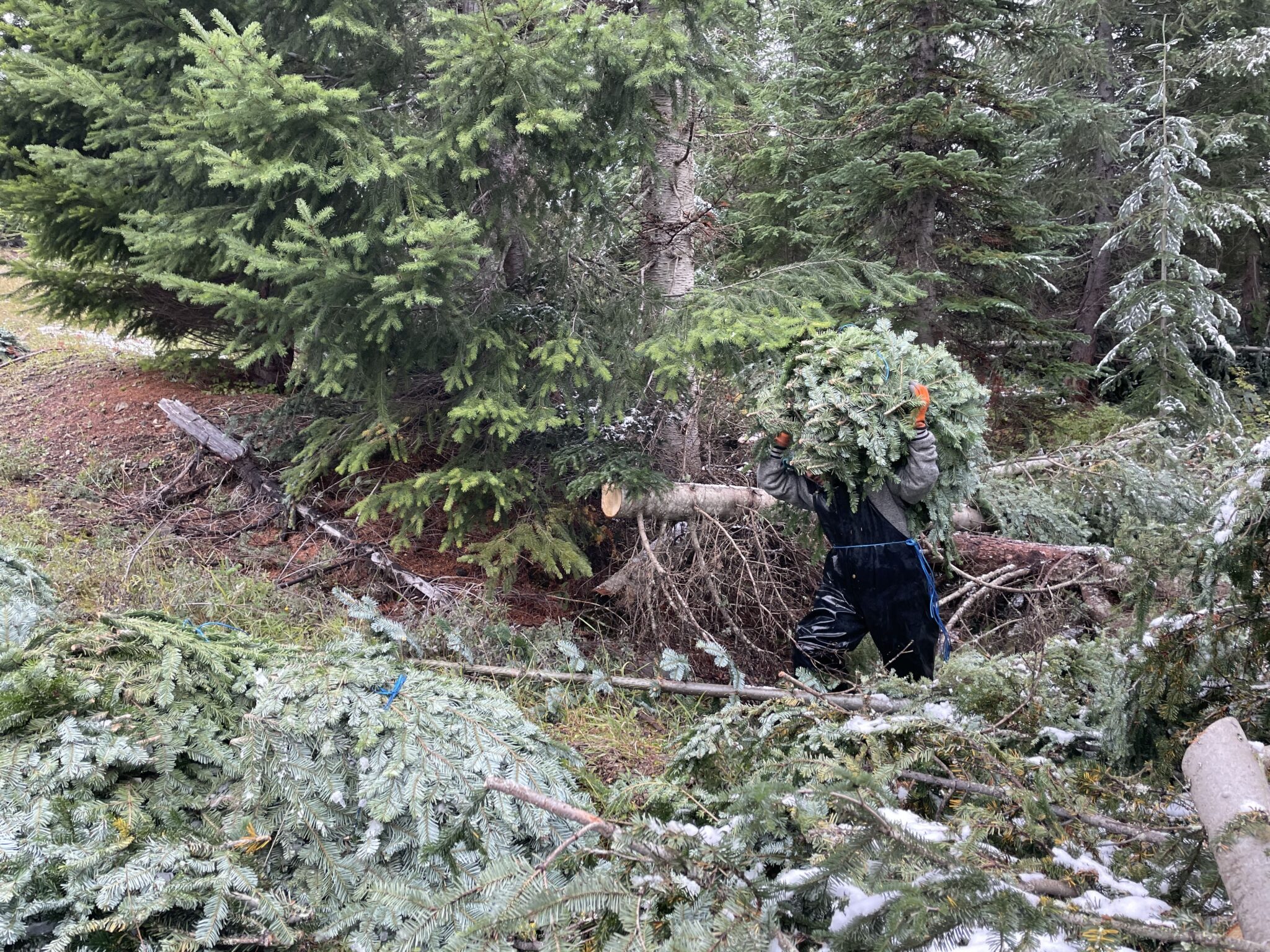
NNRG recently facilitated a unique harvest at Nisqually Community Forest, a community-owned and community-managed forest at the foothills of Mount Rainier.
The Community Forest is the site of a project that is testing the effects of thinning to different densities on a stand’s ability to adapt to the hotter, drier climate of the future. In November, a thinning crew hand-felled small-diameter trees to create more room for the remaining trees to grow and reduce competition for water and nutrients.
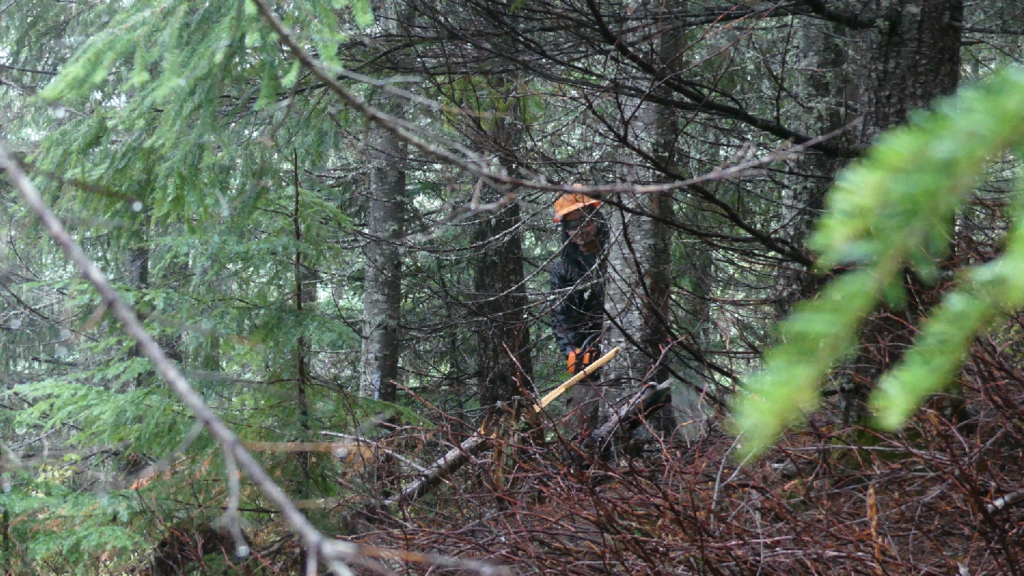
A member of the thinning crew hand fells a fir in a thick patch of forest that’s being used in a climate adaptation project.
Normally, the small-diameter trees felled during a pre-commercial thinning have little economic value, and might be left on the ground in the forest, to allow the biomass to decompose and return nutrients to the ground. In some cases, they might be turned into wood chips that can be used on existing trails.
But the slash left over from the thinning at Nisqually Community Forest was put to a different use. Benjamin Valdes and his crew at United Evergreens came in and harvested boughs from the felled trees, which will be sold to companies that use them for making holiday wreaths, garlands, and even seasonal bouquets.
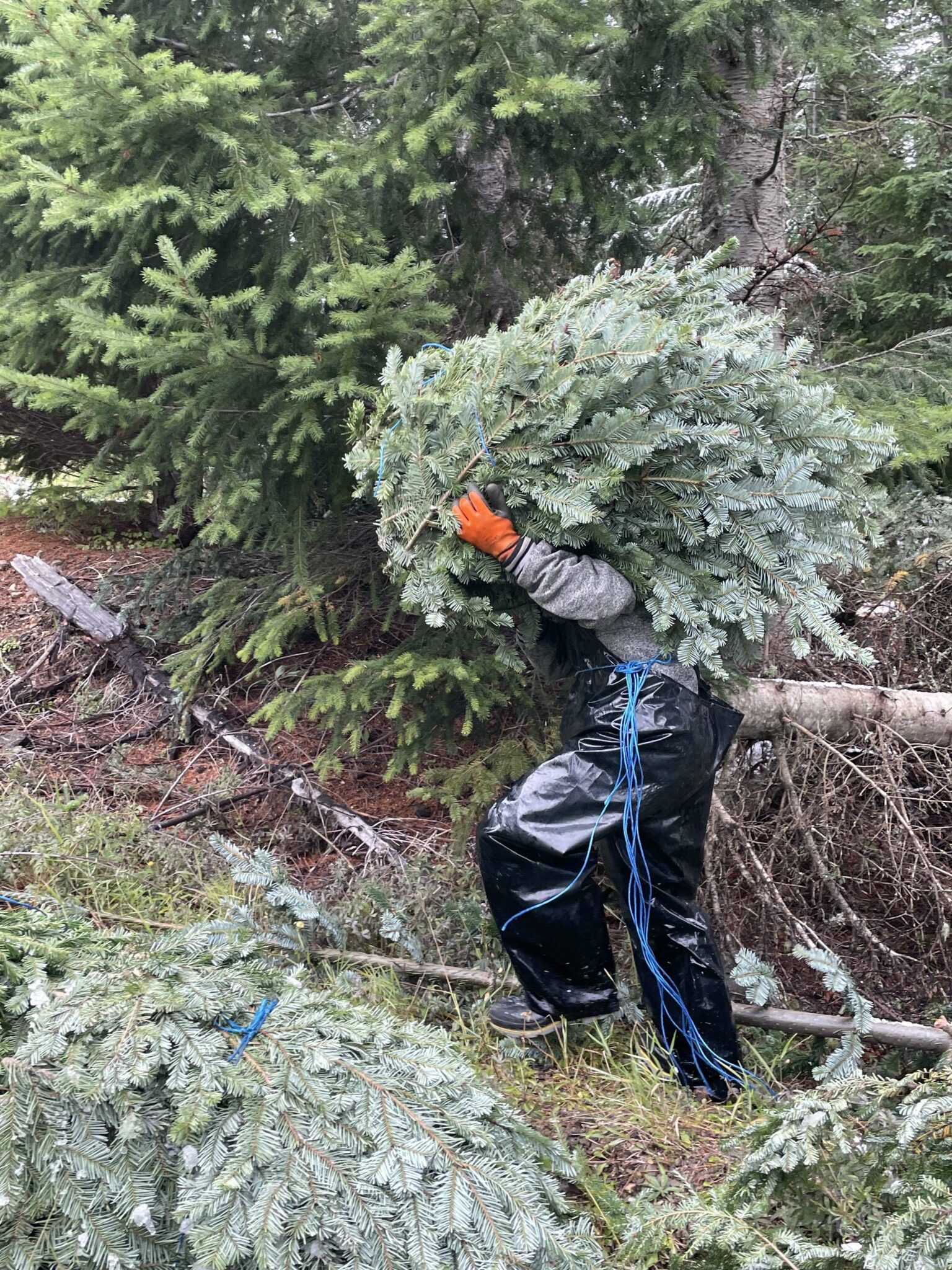
One of the United Evergreens crew members hauling freshly cut boughs to a landing site.
Benjamin Valdes owns United Evergreens, and has over 25 years experience in this line of work. Before founding United Evergreens, he managed the production of western greens for other companies.
United Evergreens harvests different products depending on the time of year. From August through May, the company is focused primarily on a class of forest products called “western greens,” which includes salal, beargrass, green and red huckleberry, and sword ferns.
In June and July most western greens are putting on new growth, and are too tender and fragile for harvesting and shipping. During those months, Mr. Valdes and his crew harvest Cascara Sagrada (Rhamnus purshiana) bark. Cascara is a native of the Pacific Northwest, and its bark is used in the botanical supplement market, primarily as a natural laxative. Indigenous peoples of the Pacific Northwest have used Cascara bark for the very same purpose for millennia.
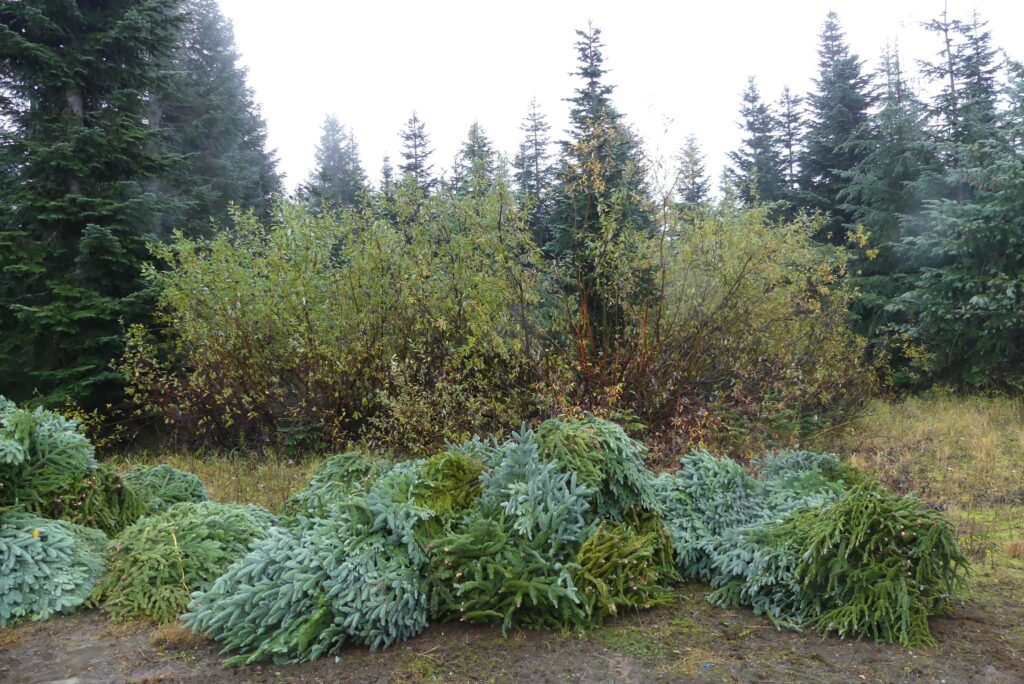
Silver fir and Noble fir boughs bundled and stacked for pickup at the Nisqually Community Forest.
The Christmas greens harvest begins in mid-September, and that’s what the United Evergreens crew was harvesting from the thinned trees at Nisqually Community Forest ― specifically Noble and Silver fir boughs.
Normally, the climbers from the crew would carefully harvest boughs from live (non-felled) trees, taking no more than 50% of the tree limbs from the start of the limb canopy so that the survival of the tree isn’t harmed by the harvest. But at Nisqually Community Forest, Mr. Valdes and his crew harvested boughs from the dead trees that had just been felled by the thinning crew. “It was a good call to have us harvest after your thinning,” says Mr. Valdes. “This was added value to your land owner for something that would have normally been just wasted on the ground.”
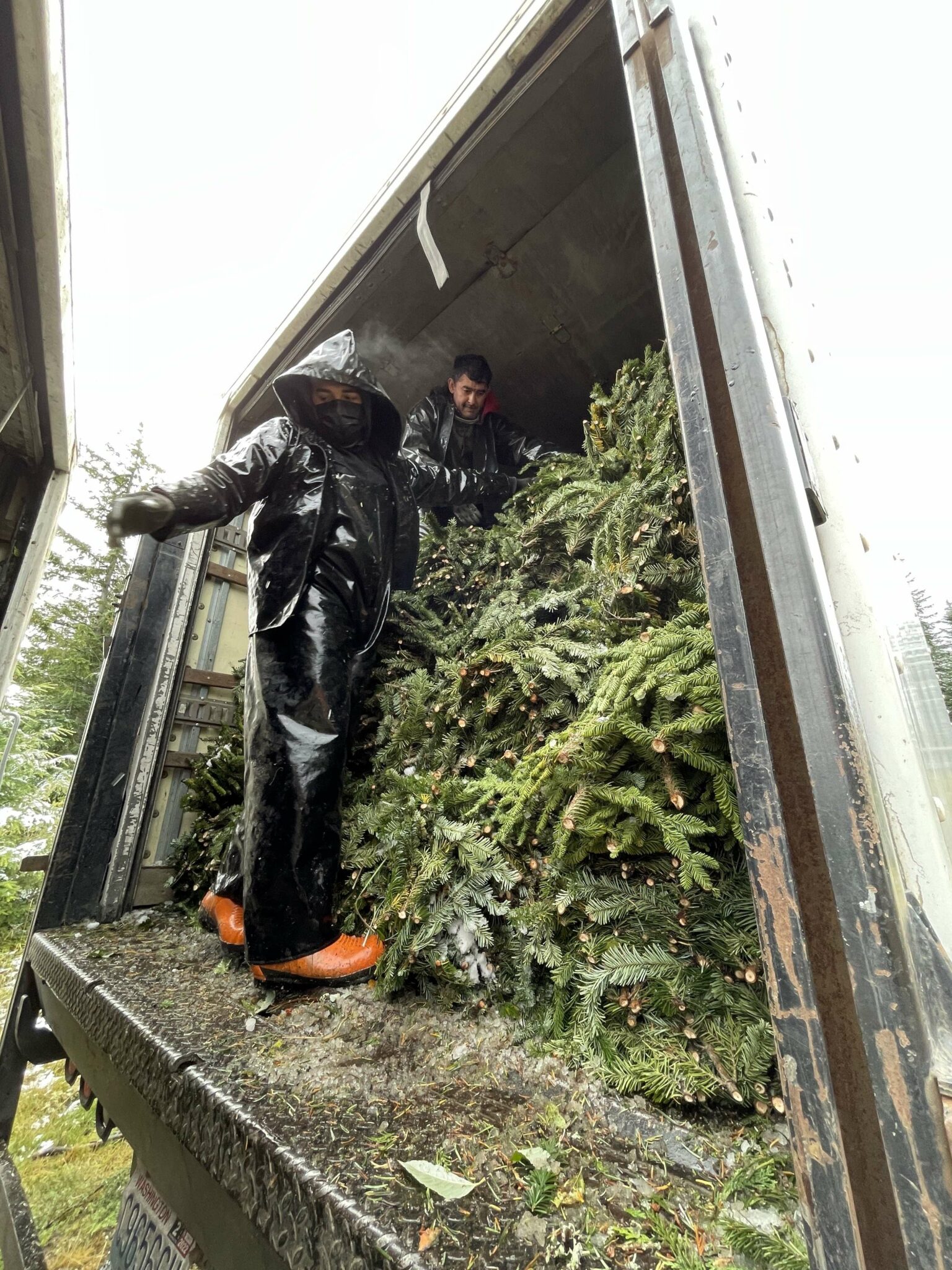
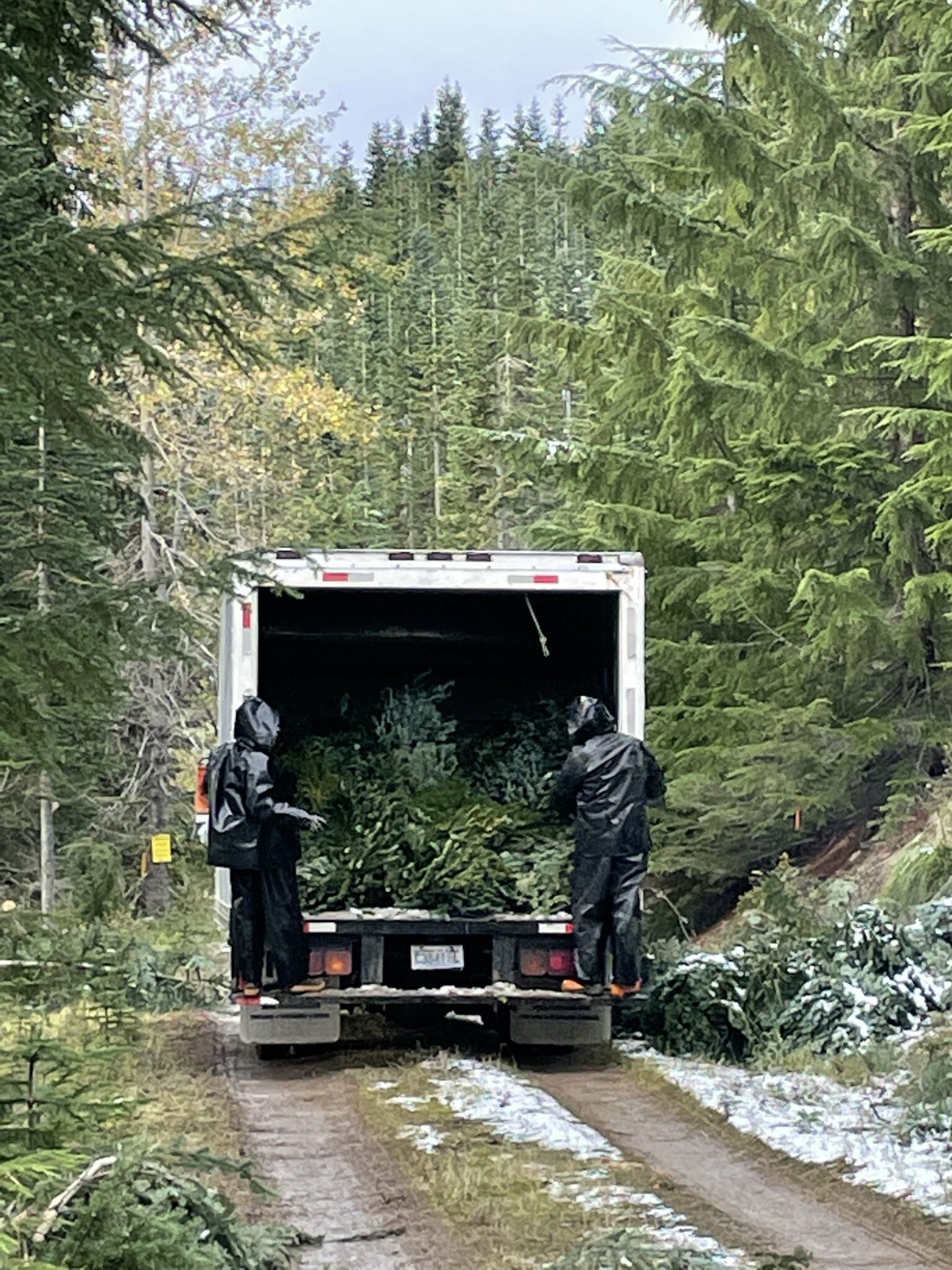
The United Evergreens crew loading boughs and driving them out of the Community Forest during the recent harvest.
These boughs will be sold to garland makers in Canada and across the east coast of the United States, as well as to local greens companies that make Christmas wreaths and garlands. So the next time you purchase a wreath from a local supplier, it might include fir boughs straight out of the Nisqually Community Forest!
Once they’re finished with the holiday bough harvests, Mr. Valdes and his crew will continue harvesting western greens from a variety of different land owners. They work on a range of lands, from small family forests of 10 acres, to 200,000-acre forests managed by industrial timber companies. They also lease state land managed by the Washington State Department of Natural Resources.
Leasing the land usually means selling the right to harvest western greens and other forest products, which can be an extra source of income for a forest owner. But such leases come with an additional benefit: “We also police the land that we have under lease to insure that no thieves are actively trespassing. Garbage patrol is also something that is important to us, and a constant problem,” says Mr. Valdes.
Indeed, illegal harvesting of greens (without a permit or lease) is certainly an issue that’s been around in the Pacific Northwest for a while.
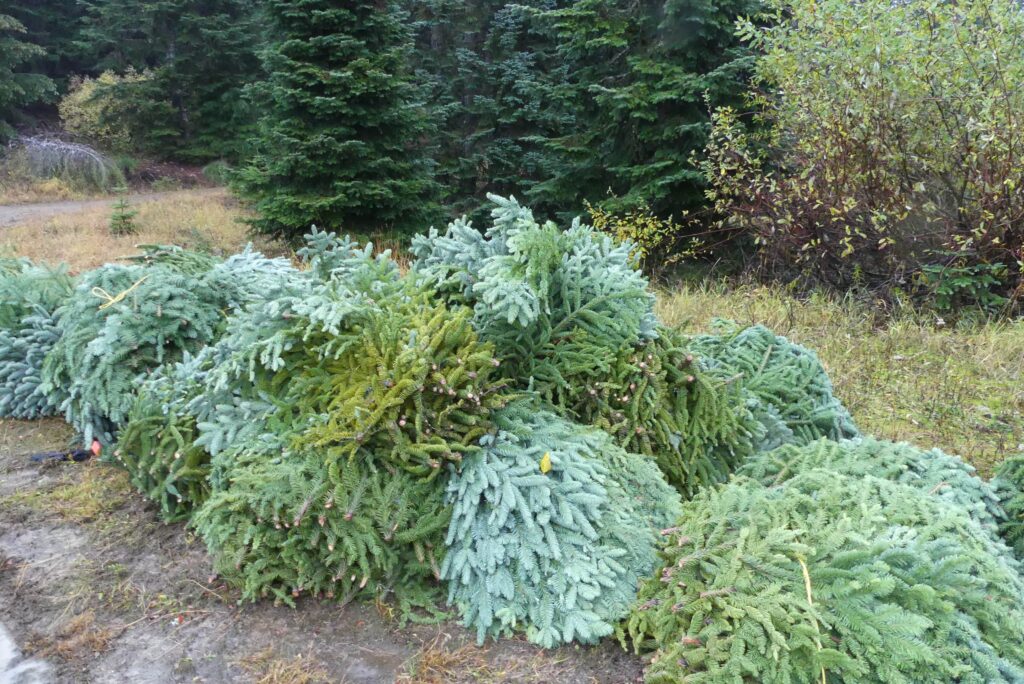
Future wreaths, garlands, and other holiday greens.
The bough harvest at Nisqually Community forest was a prime example of how sustainable forest management can have cascading benefits. The Community Forest was able to earn some revenue from the sale of slash produced by climate adaptation thinning, and the United Evergreens crew was able to harvest boughs from trees that had already been felled, eliminating the need for climbing. Win-win!
To learn more about United Evergreens, email unitedevergreens (at) yahoo.com.

Leave a Reply